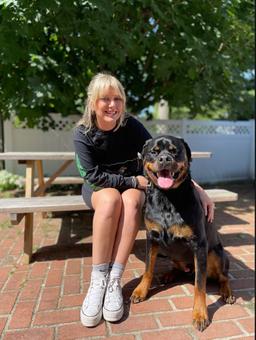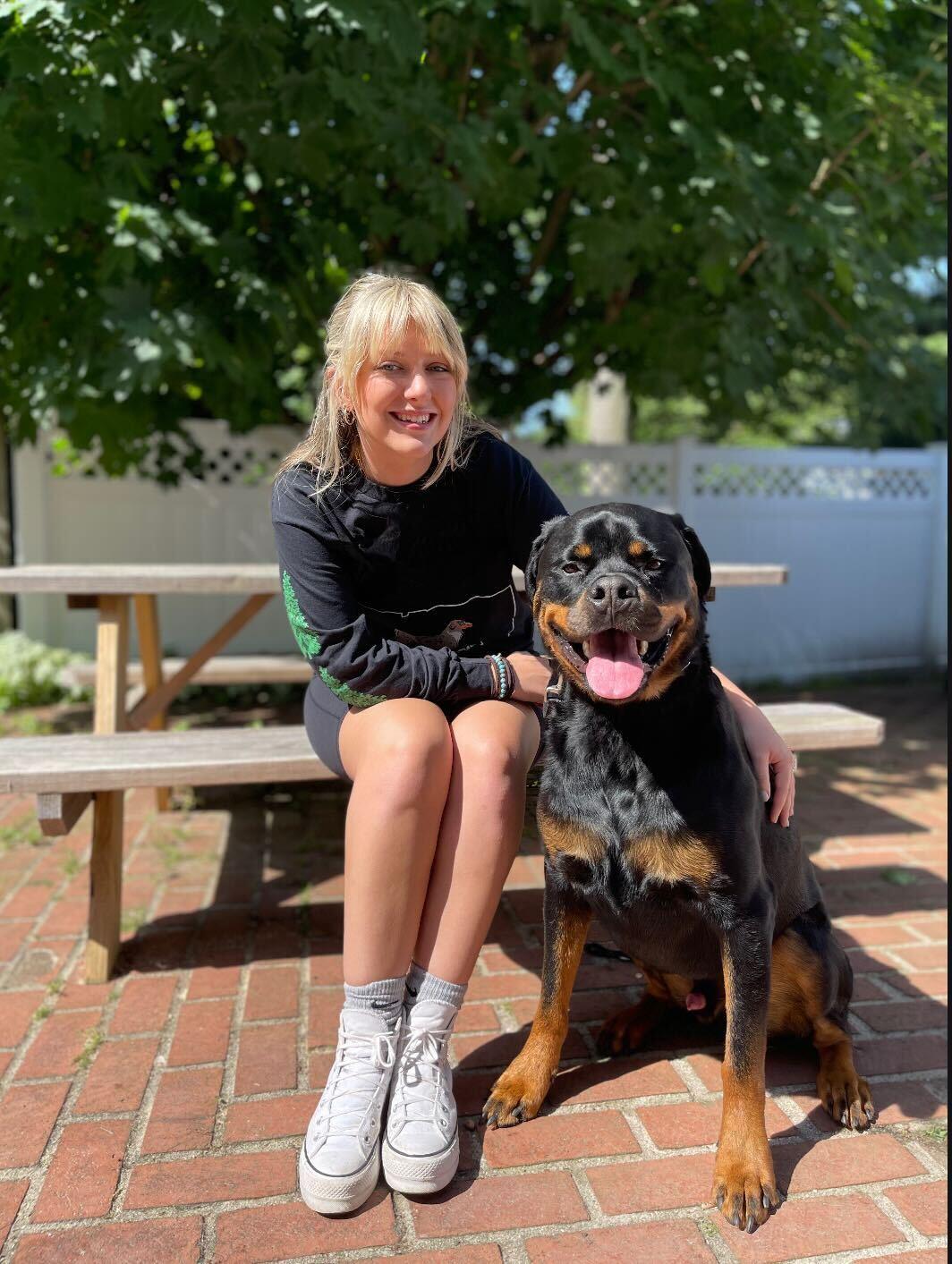You are what you eat. So is your dog. This makes it very important for you to choose the right food, in the right way and the right quantity for your dog. Now, the first step for any quest is knowing what you know and what you don’t. And we are glad you’ve taken the first step by asking the right question. We’ll make sure that you get all the right answers.
There are several food choices available for dogs. They include –
Dry dog food - It consists of processed and compressed ingredients shaped into small, crunchy pieces.
Wet dog food (canned) – It is the one commonly sold in stores in cans and pouches. It has a higher moisture content compared to dry food.
Semi-moist dog food – It comes in the form of soft pellets or chunks. It contains more moisture than kibble but less than wet food.
Dehydrated dog food – This one’s made by removing moisture from raw or cooked ingredients through dehydration or freeze-drying. You rehydrate it with water before feeding.
Grain-free dog food – As the name suggests, it excludes grains like wheat, corn, and rice, and often has alternative carbohydrates such as sweet potatoes or lentils.
Then, you can go for options like homemade and organic or natural dog food as well, which is grown without synthetic pesticides, hormones, or antibiotics. Yes, we know that we haven’t mentioned the main type of dog food for which you came here.
Now that the article is dedicated to it, let’s give it the full limelight.
What is a Raw Diet?
A raw diet means feeding uncooked ingredients to your dog as against the processed and baked-style dog foods that are widely available. It often consists of uncooked meat along with other uncooked ingredients like fruits, vegetables and eggs.
Are Dogs Healthier on a Raw Diet?
The main reason why people feed raw diets to their dogs is because they think of it as a more natural diet for dogs as compared to traditional foods. It is what their wild ancestors used to have before they started walking the ramps with humans.
Pet nutritionists, vets, and dog owners have been debating the pros and cons of raw dog food. The ones who are for raw food, homemade or commercial, argue the following benefits of feeding it to their dogs – (1)
Coat and skin – The high-quality protein and the essential fatty acids present in the raw food help in maintaining a healthy and shiny coat.
Teeth – Chewing raw bones helps clean a dog’s teeth and gums by preventing tartar buildup. This also helps prevent many dental problems.
Digestion – Being the natural form of a dog’s diet, it helps give relief to some dogs with sensitive stomachs.
Energy levels – Some people even argue that their dogs have been more energetic and vital after switching to raw food diets.
Some even claim less smelly poops!
Now these may be true but again the efficacy of any diet completely depends on your dog’s size, weight, age, lifestyle, etc. You need to ensure that the diet gives them complete and balanced nutrition. Having said that, many experts are against a raw food diet for dogs and their reasons seem equally convincing.
What are the Drawbacks of a Raw Diet?
A study conducted in 2011-12 showed that as much as 25% of raw dog food samples tested positive for harmful bacteria, including Salmonella ssp. and Listeria monocytogenes. These bacteria are not only harmful to your dog but also to you, who handles the food while preparing it because of cross-contamination. Cooking helps kill the bacteria, parasites and other pathogens present in the food. (2)
Raw food, especially bones also pose the risk of choking to our dogs. Cooked or uncooked, bones can get stuck in your pet’s stomach and block it, or splinters of bone can damage your pet’s delicate insides. Sometimes, chewing the bones can cause tooth fractures as well. Let’s say if your pet does not choke or fracture their tooth, bones can cause stomach pain and constipation due to their high levels of calcium.
If you’re trying to feed raw food at home without supervision, you may even not fulfil your dog’s nutritional needs. This can then result in a weakened immune system. It requires a lot of careful planning to ensure your dog doesn’t find themselves getting too much, or too little, of the nutrients they need.
What is the Healthiest Diet for Dogs?
One size never fits all. A good and healthy diet for your dog will depend on the age, size, and activity levels, etc. of the dog. A puppy’s nutritional needs are always going to be different from an old dog’s needs (just like for human babies). Having said that, a high-quality, primarily meat-based diet is considered a good diet. No preservatives or fillers.
Here are the checkpoints for you to ensure a healthy diet for your canine buddy – (3)
Company name – A popular and trusted brand name makes it easier to contact them in case of any query or problem.
Complete or not – Some dog foods available in the market are classified as complimentary and not complete which means that they do not make up an entire meal.
Ingredients – The first ingredient is always the main basis of the food, irrespective of whether it is your food or your dog’s. Look for high-quality protein sources like chicken, beef, or fish at the top. Check if they’ve sneakily listed grains in some corners to make them appear unimportant.
Nutrients – High-quality protein, healthy fats, complex carbohydrates, vitamins and minerals are the main nutrients your dog food needs to have. Stay away from unnamed meats, artificial additives and fillers.
You can switch between different diets to keep your dog entertained and familiar with different types of food, as some situations may call for it. For example, wet food is softer and easier to chew but doesn't provide the same mechanical cleaning action on the teeth as dry food, which can contribute to plaque buildup. Your dog may also like a bit of a change in the routine once in a while.
Here’s what you need to do before switching diets for your dog –
Consult your vet as they may advise about the right choices particular to your dog depending on the lifestyle and activity levels. If there is any past medical history, the vet may be able to guide on which foods to avoid.
Weigh your dog. As a rule of thumb, your dog should eat about 2% - 3% of their body weight in raw food each day.
Think about the activity levels of your dog. If your dog is the ‘never sit idle’ kind, you may want to maintain the calorie intake to manage the weight.
Include a variety of protein sources in your dog’s diet. Shuffle between organs, bones and even fruits and vegetables if your dog prefers them. Don’t forget to check for allergies though.
When introducing a new diet to your dog, monitor the weight, energy levels and overall health for a couple of days. In case there is a change, consult your vet.
More about Spot Pet Insurance
Prescription dog food. This is the type of diet that we skipped in the first section. It is a specialized diet by vets for dogs with specific conditions like kidney disease, food allergies, or obesity. Dogs are susceptible to various illnesses and sickness during their lifetime. The treatment can involve diagnostics which include blood and urine testing, radiographs (X-rays), and possibly ultrasounds, followed by medications, prescription diets and follow-up vet visits. Seems like a lot of expenditure, doesn’t it?
We wouldn’t want you to worry about the treatment costs and prescription diets when your pet is sick or injured. So, we’ve got a solution for you. With pet health insurance you can save up to 90% of all these costs.
Spot accident and illness plans can be used with any licensed vet in Canada or the U.S. Whether you are home, or traveling to the U.S., veterinary services your pet receives for the diagnosis, treatment, or management of covered conditions can be eligible for reimbursement. Spot’s accident and illness plans can help cover a variety of conditions including broken bones, lacerations, aggression, kidney disease, diabetes, and more. With the addition of Wellness Riders for an extra cost, you can also receive reimbursements for wellness exams, certain vaccinations, dental cleanings, and more.
Learn more about dog insurance or get a free quote!

I’m Charlie: canine enthusiast with a knack for figuring out why my dog, Dallas, is more infatuated with tennis balls than me. My lifelong passion for dogs has created a dedication to help other pet parents better understands their furry family members!
Feeding your pet a raw diet. (n.d.). PDSA. https://www.pdsa.org.uk/pet-help-and-advice/looking-after-your-pet/all-pets/raw-diets
Dogs and Raw Food diets | VCA Animal Hospitals. (n.d.). Vca. https://vcahospitals.com/know-your-pet/dogs-and-raw-food-diets Youens, L. (2024, May 21).
Best diet for dogs - Importance of a balanced diet for dogs. Myfamilyvets. https://www.myfamilyvets.co.uk/best-diet-for-dogs












